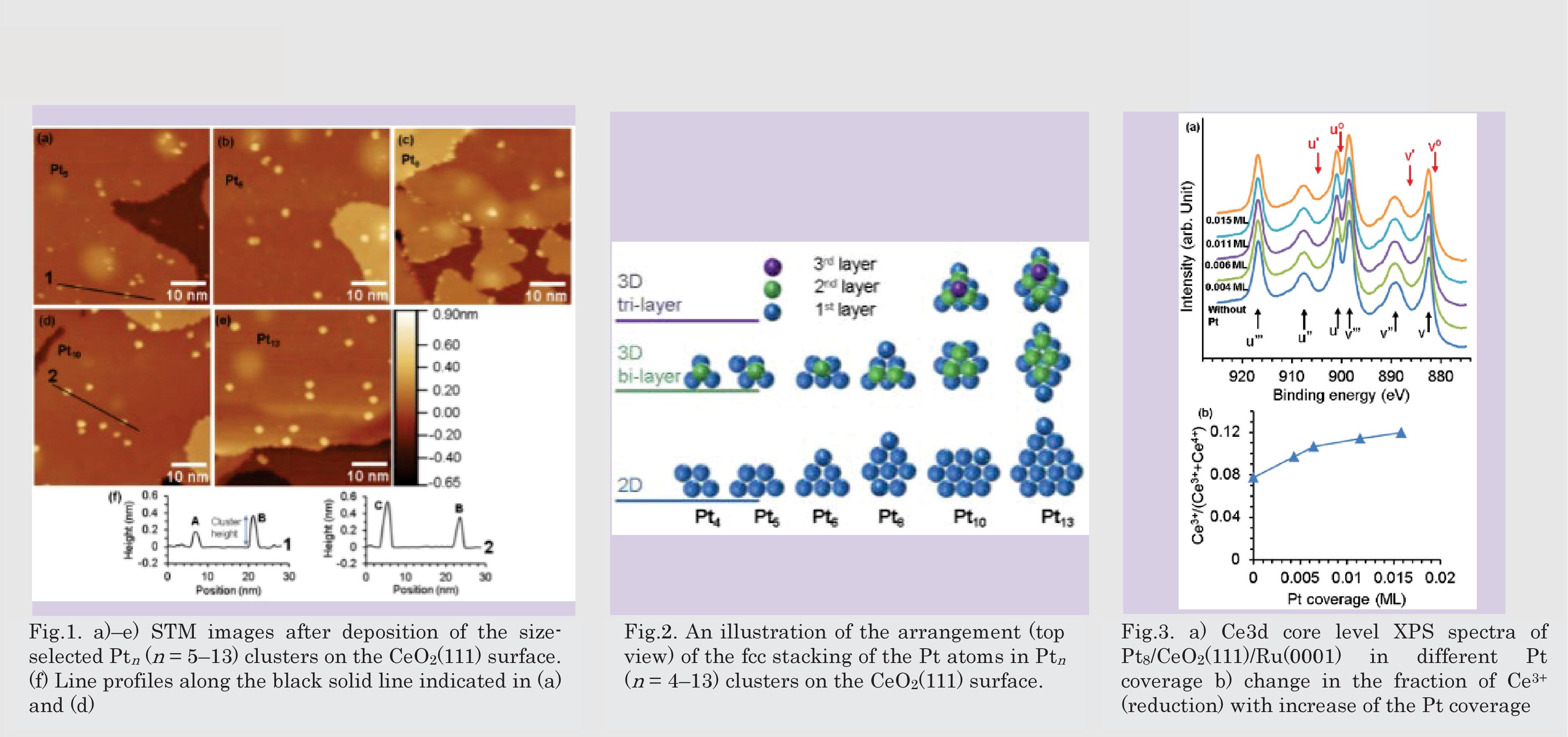IMRAM
Institute of Multidisciplinary Research for Advanced Materials, Tohoku University
東北大学
多元物質科学研究所

LAST UPDATE 2021/05/06
-
研究者氏名
Researcher Nameシェド・モハマド・ファクルデイン・シャヘッド Syed Mohammad Fakruddin SHAHED
助教 Assistant Professor -
所属
Professional Affiliation東北大学多元物質科学研究所
計測研究部門 走査プローブ計測技術研究分野
Institute of Multidisciplinary Research for Advanced Materials, Tohoku University
Division of Measurements, Advanced Scanning Probe Microscopy -
研究キーワード
Research Keywords表面科学
走査プローブ顕微鏡
分子吸着
触媒反応
Surface chemistry
Scanning probe microscopy
Molecular adsorption
Catalysis Reaction
- 研究テーマ
Research Subject -
貴金属Pt /セリア触媒の原子スケールの化学の解明
Elucidation of the atomic-scale chemistry on noble Pt/ceria catalysts.
研究の背景 Background
金属・酸化物界面は、金属触媒不均一反応において重要な役割をもっている。 担持されたPt触媒およびセリアは、セリアが酸素貯蔵成分として作用する自動車の排気ガス浄化触媒に用いられる物質としてよく知られている。 原子スケールでのセリアのレドックス特性およびPtクラスターとセリア表面との相互作用の研究は、自動車の排気触媒における金属・酸化物界面の役割を理解する上で非常に重要である。
Metal–oxide interfaces play crucial roles in metal-catalyzed heterogeneous reactions. Supported Pt catalysts and ceria are well known for their application in automotive exhaust catalysts where ceria acts as an oxygen storage component. Study of the redox properties of ceria and the interaction of the Pt clusters with ceria surface in atomic scale are incredibly important for the understanding of the role of metal-oxide interface in the automotive exhaust catalysis.
研究の目標 Outcome
原子レベルで界面構造の原子構造を明らかにし、さらにその構造を制御することは、触媒性能を最適化するために非常に有効な方法となりえる。Ptの取り込み量を最小限に抑えながらも最高のパフォーマンスを実現するためには、Ptクラスターのサイズをあるレベルまで絞り込むことが必要となる。 サイズ選択されたPtクラスターの形状とクラスター・担体間の相互作用に関する正確な情報は、触媒性能を最適化するための金属酸化物界面のエンジニアリングの鍵となる。
Atomic-level tailoring of the interfaces and discovering their atomic structures will provide an effective way to optimize catalytic performance. Narrowing down the size of Pt cluster to certain level is necessary for the highest performance with the lowest amount of Pt loading. The precise information of the morphology of the size-selected Pt clusters and cluster-support interaction can be a key for engineering the metal–oxide interfaces to optimize the catalytic performance.
研究図Research Figure

Fig.2. An illustration of the arrangement (top view) of the fcc stacking of the Pt atoms in Ptn (n = 4–13) clusters on the CeO2(111) surface.
Fig.3. a) Ce3d core level XPS spectra of Pt8/CeO2(111)/Ru(0001) in different Pt coverage b) change in the fraction of Ce3+ (reduction) with increase of the Pt coverage
文献 / Publications
SMF. Shahed, A. Beniya, H. Hirata and Y. Watanabe, J. Chem. Phys. 148, 114702, 2018SMF. Shahed, T. Hasegawa, Y. Sainoo, Y. Watanabe, N. Isomura, A. Beniya, H. Hirata and T. Komeda, Surf. Sci. 628, 30-35, 2014
研究者HP
- shahed.smf.e3
 tohoku.ac.jp
tohoku.ac.jp - http://www2.tagen.tohoku.ac.jp/lab/komeda/